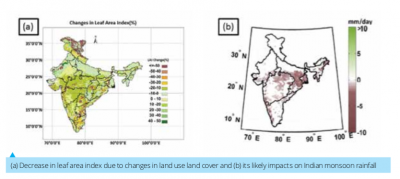
Indian Monsoon provides 80% of the annual rainfall in India and is associated with the northward shift of Intertropical Convergence Zone (ITCZ); governed by large scale circulation. It is believed to be dominated and controlled by distant moisture sources from oceans. However, the contributions from large evapo-transpiration flux, being generated from the land surface processes, specifically from the agriculture intensified Ganga basin, is largely overlooked. Furthermore, regional patterns of monsoon are yet to be simulated reliably, and there is a major gap between the meteorological analysis and the use of the same for local water management. Challenges further increase when uncertainty starts playing a role. Some of the issues can be sorted out with an understanding of geophysics associated with the behaviour of moisture flux and transport.
We use Lagrangian approach to track the moisture from the source to the sink (place of precipitation)during the monsoon season. We have found that Western, Central and Upper Indian Oceans are the three major oceanic sources and Ganga Basin is a major land source to the monsoon rainfall. With these major sources, we could also explain the inter-annual and intra-seasonal variability of monsoon. Considering the significant impact from land sources, we test have tested the likely impact of land-use-land-cover (LULC) change on rainfall with a regional climate model. We found weakening of monsoon rainfall over Ganga basin and North East India due to recent changes in LULC.
The other major land surface process associated with monsoon extremes is urban canopy process. We found urban signature on Indian monsoon extremes in the Central, Western and Southern India. Specific regional climate modeling on the city of Mumbai showed a prominent urban signature on precipitation extremes at a higher
quantile. We have developed a novel technique of combining statistical and dynamic model for projections of rainfall extremes in Mumbai considering the impacts of climate change and urbanisation. We found that extreme rainfall has intensified in Mumbai due to urbanisation and this happened only at a few urban pockets due to increasing atmospheric instability and wind convergence. This scientific understanding helps in improving the rainfall forecast skill of weather models. The study is led by doctoral students and was published in Scientific Reports by the Nature Publishing Group
Prof. Subimal Ghosh
